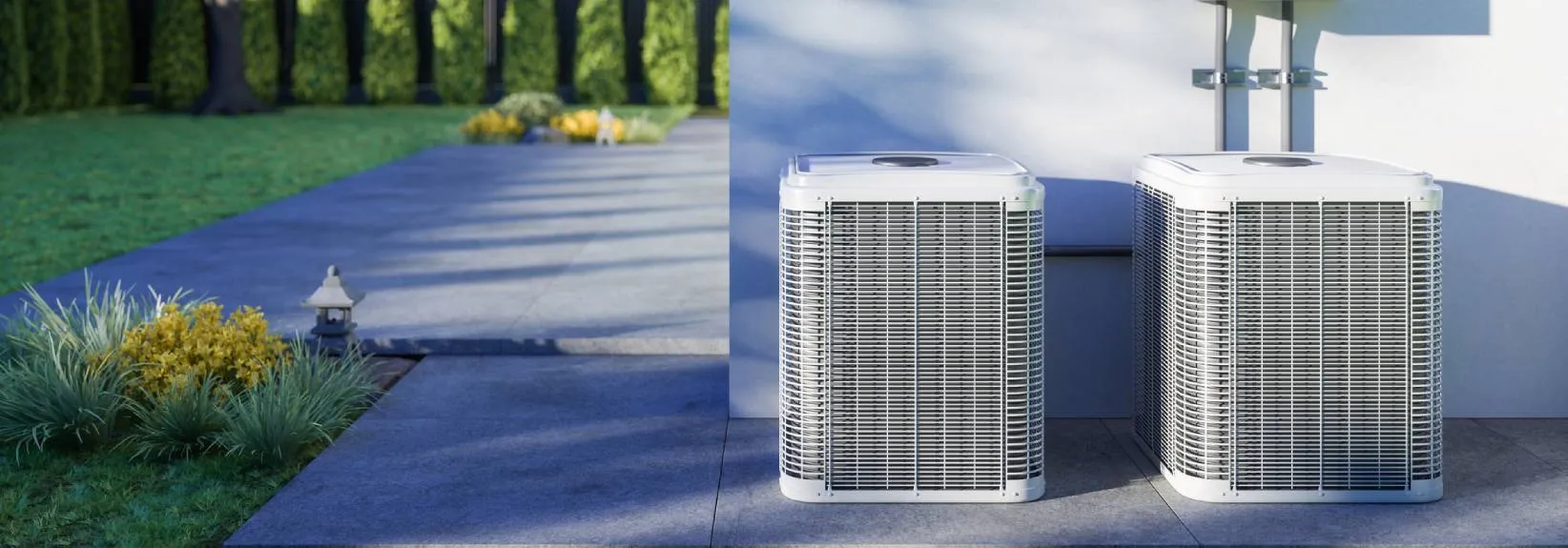Air Conditioner vs. Air Handler
If you’re hunting for heating and cooling services, you may encounter confusing, sometimes contradictory information about various kinds of HVAC systems. One thing that causes plenty of confusion is the air handler. Is this another way to describe an air conditioner? We’re here to set the record straight.
What Is an Air Handler?
An air handler is the indoor component of some types of HVAC systems. It hooks up to a network of air ducts that circulate conditioned air all through the building. Air handlers differ in size, type and capacity, depending on the application.
Some people use the words “air handler” and “blower” interchangeably, but this is not accurate. An air handler is an entire unit containing a blower and numerous other parts, all of which work together to condition and circulate the air.
Does an Air Conditioner Use an Air Handler?
Typically, an air conditioner [shares|uses|utilizes} the furnace’s blower motor, so no air handler is needed. However, in weather where home heating is not something that is necessary, an air conditioner may be the only HVAC equipment present. In this situation, the indoor air handler operates along with the outside unit, referred to as the condenser.
In this setup, the AC unit’s air handler [blows|forces|pushes} indoor air [across|over|along the outside of} the evaporator coil, which absorbs heat and collects moisture, leaving the air handler to deliver cooled, dehumidified air back inside the building using ductwork. Refrigerant lines link the air handler to the outdoor condenser, enabling the heat transfer to the outside. This will permit the air conditioning to preserve a constant, cozy indoor temperature and humidity level.
Does a Heat Pump Use an Air Handler?
This is where air handlers are most commonly found. In cold climates where heat pumps are less reliable, they are occasionally installed alongside furnaces, creating what’s referred to as a dual-fuel system. However, advancements in cold-climate heat pumps make dual-fuel systems less prevalent as of late. Because there is no furnace to lend its blower motor, heat pumps require a dedicated air handler to circulate conditioned air.
Heat pumps work by pulling heat from the outside air and moving it inside via the indoor coil. The air handler blows air across the coil to collect heat before circulating it throughout the building. A heat pump can additionally be used for cooling, where it extracts heat from the indoor air and moves it outside, just like an air conditioner.
Does a Furnace Use an Air Handler?
No. Furnaces are made with a blower motor to move conditioned air. The blower is typically housed in the interior of the furnace. It forces air across the heat exchanger, a metal component that exchanges heat from a fuel source to the air blowing over it. The fuel source can be natural gas, propane or oil, which is ignited to create heat. Once warmed up, the air is distributed back through the ductwork system and inside the building.
What Are the Parts of an Air Handler?
The main pieces of an air handler include:
- Blower: The blower is a motor-driven fan that moves air throughout the ductwork. It drives air across the heating or cooling elements to control the indoor temperature.
- Heating or cooling elements: According to the type of HVAC system you have, the air handler may have heating or cooling elements, including an evaporator coil or backup electric heat strip.
- Air filter: An HVAC air filter removes dust, dirt and other contaminants from the air as it enters the air handler to be heated or cooled. Air filter types and efficiency ratings vary based on system requirements. Remember to swap out your air filter routinely to prevent restricting airflow through the system.
- Dampers: Dampers are used to control airflow in structures with zoned heating and cooling. They can be manually or automatically controlled to direct air to particular rooms as needed to uphold a comfortable temperature.
- Humidifier or dehumidifier: Some air handlers include a humidifier or dehumidifier, which manages the indoor relative humidity level. A humidifier puts moisture into the air in the winter, while a dehumidifier gets rid of moisture in the summer.
- Control system: The control system is tasked with regulating the air handler. It sometimes will include a thermostat, humidistat or other sensors to track the temperature and humidity throughout the building.
Schedule Air Conditioner or Air Handler Repair
If you’re having issues with your air conditioner, air handler or other HVAC components, Service Experts Heating & Air Conditioning is here to help out. Our team of Expert professionals can diagnose and repair any problems with your climate control system, so that it runs safely and efficiently. We believe in our excellent work so much that we back every single repair with a one-year 100% satisfaction guarantee! For more information or to request air conditioning repair in North America, please reach out to a Service Experts office in your neighborhood today.
